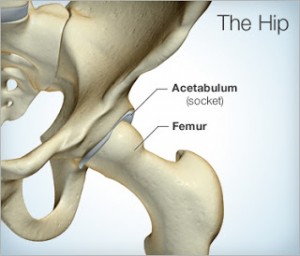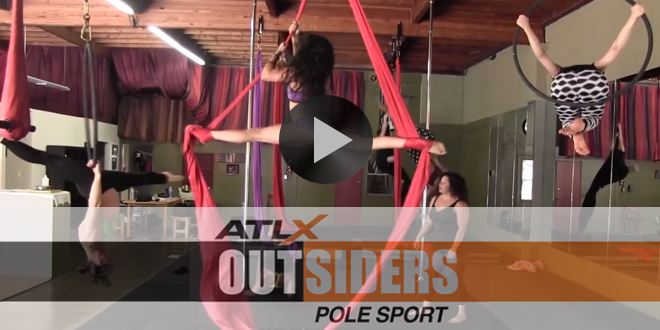
By: Dr. Phil Wagner, M.D.
When any new injury phenomenon
arises, we must proceed with caution.
The field of sports medicine advances rapidly; better imaging to identify structures, as well as more specialized physicians that can clinically decipher problems faster.
 Yet when a study identifies 90% of professional athletes have the same problem, the laws of probability should cause us to look beyond just medical advances.
Yet when a study identifies 90% of professional athletes have the same problem, the laws of probability should cause us to look beyond just medical advances.
This problem is impingement, but not in the usual place of shoulders, found in overhead athletes that throw or hit excessively (see: Overhead Athletes should limit the laps via Sparta Point).
This injury is found in us all:
Hip impingement.
What is Impingement?

Impingement occurs in ball and socket joints, primarily the shoulder and hip, dueto abnormal rubbing of the ball against the socket. Hip impingement is called femoral acetabular impingement (FAI) because the femur, the thigh bone, eventually forms the ball that enters the hip socket. The acetabulum is the socket of the pelvis, and the connection with the femur forms the hip joint shown to the right.
Like most injuries, the abnormal rubbing of the ball and socket joint has some genetic predisposition. Certain bony structures we are born with make this friction more likely to occur. However, a January 2013 study examined 125 NFL athletes and found that
90% had at least one symptom of FAI.
The authors found that the only predictor of FAI was an increased angle of the femur bone within the hip socket. Basically, think of your thigh bone being corkscrewed further and deeper into your pelvis.
The study is important because those odds of 90% should encourage us to look beyond just our genetic bone structure and evaluate the activities and subsequent prevention strategies to be in that 10%.
How does Impingement happen?
At a 90% incidence, if you are an athlete, just assume you have it. But if you are curious about self diagnosis, FAI has a range of symptoms, generally hip, groin and low back pain, usually a pinching sensation. The abnormal rubbing that defines impingement is an overuse injury. Repetitive similar motions at the hip joint cause wear and tear that eventually leads to pain, and ultimately surgery if the problem is not addressed.

The main movement pattern associated with FAI is deceleration. Athletes must internally rotate their femur to ‘block” momentum in one direction to produce the desired movement.
You can picture this motion as football players, or any field/court athlete such as soccer or basketball, constantly change direction and further corkscrew the ball of the femur deeper into the hip socket. Baseball players and golfers use that front hip to stop rotation to increase the power of their swing or throw (see: Stop Your Rotation on Sparta Point).
For maximizing your deceleration ability (i.e. power), there is no way around these internal rotation mechanics in your sport. Multiply these movements by thousands and you have got yourself an epidemic.
Fixing and Preventing the Problem

Athletes with FAI tend to have a “turn out” movement signatureTM (see: Why your hip flexors are tight and why your hips pop via Sparta Point), shown to the right, a high FORCE production from over reliance of their hips and trunk rather than dissipation of force creation and absorption from their ankles and knees, which is reflected in RATE.
The solution is to “unscrew” that femur from your pelvis. We always like to address prevention and rehabilitation from the 3 main areas of all physical development.

STRENGTH
Focus on eccentric strength of the lower body musculature, particularly the quads, which requires a movement signature emphasizing the ankles and knees. 1 Leg Squat is a great solution.
SKILLS
Address muscle activation during your warm-up. Perform the clamshell, shown in the photo above, as it strengthens your external rotators (gluteus maximus) to further unscrew that hip joint.
REGEN
Perform this rotational lunge daily, like the clamshell, this movement will provide some traction to open your hip joint.
Repetitive motion that screws your thigh further into your pelvis is a culprit, the question is:
how many steps are you taking to reverse it?
 ATLX The only sports entertainment television and digital media network fully devoted to everyday athletes, athletic lifestyle and athletic culture.
ATLX The only sports entertainment television and digital media network fully devoted to everyday athletes, athletic lifestyle and athletic culture.




